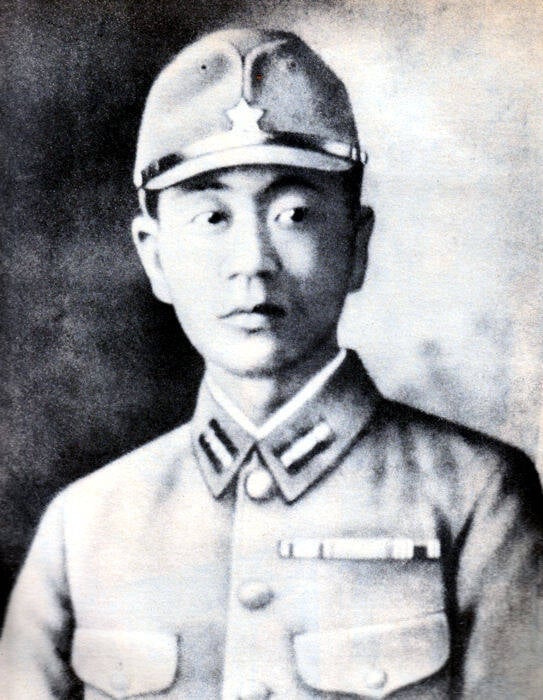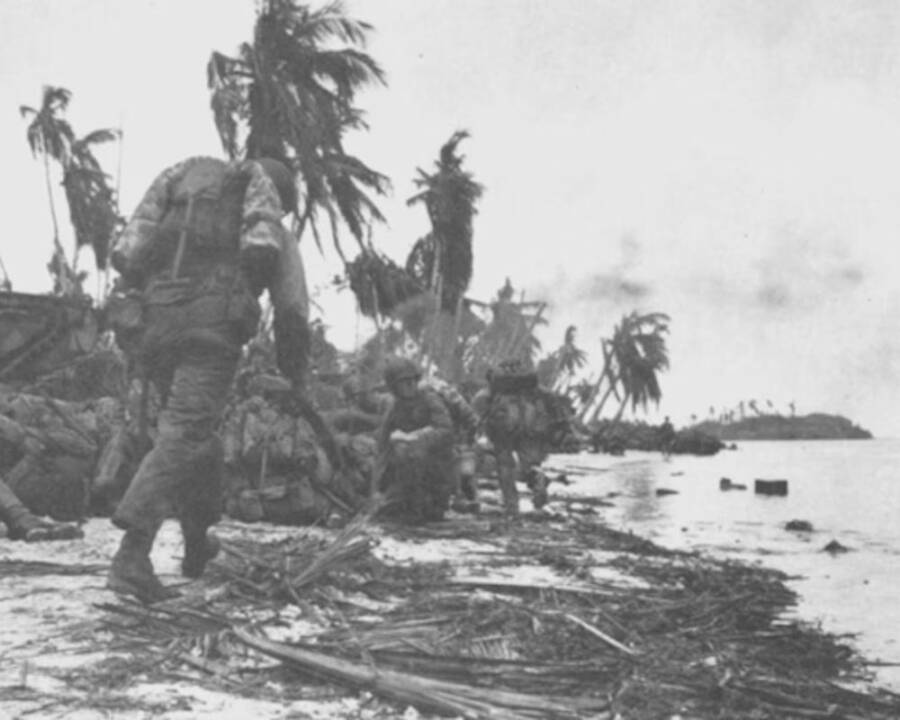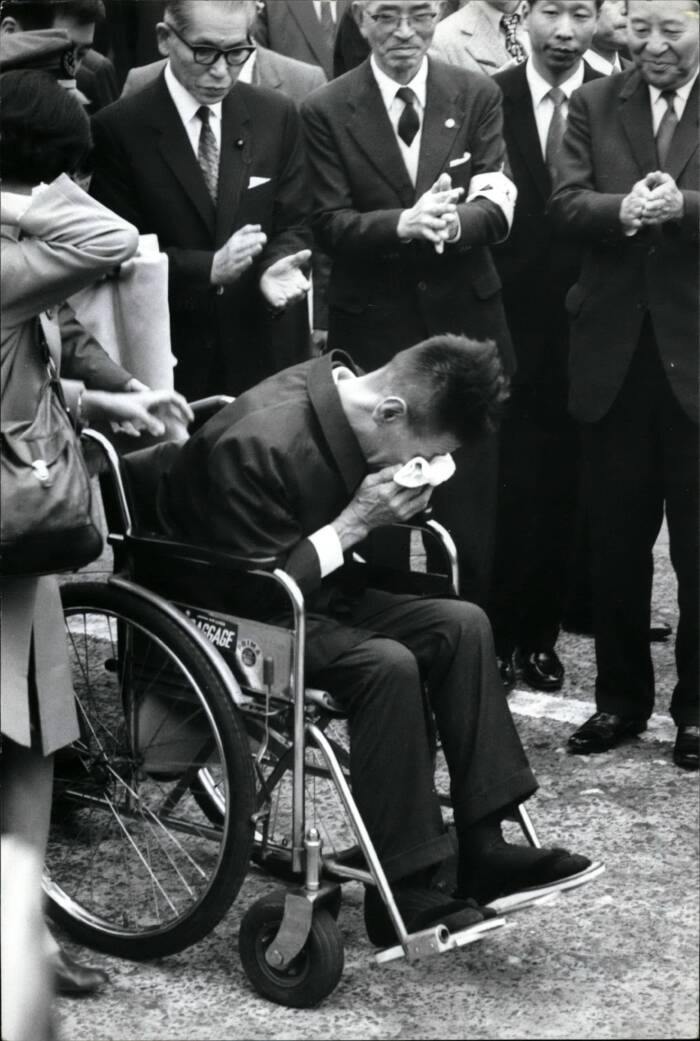Imperial Japanese Army sergeant Shoichi Yokoi fled into the jungles of Guam when American forces recaptured the island in 1944 — and didn't emerge until he was finally discovered 28 years later.
On Sept. 2, 1945, World War II came to an end. But not for Shoichi Yokoi.

Public DomainShoichi Yokoi went to war at the age of 26 — and didn’t come home until he was in his mid-50s.
Hidden deep in the jungles of Guam, Yokoi and hundreds of his fellow Japanese soldiers steadfastly refused to surrender to American troops, believing that doing so would bring great shame. But as the years passed, Yokoi’s comrades were captured or died. By 1964, he was all alone.
Yokoi remained in the jungle until 1972 when he was discovered by local hunters. He returned to Japan to great fanfare, but he found it difficult to return to life despite his hero’s welcome. In the 30 years since he’d left, the Japan that Shoichi Yokoi had once known had transformed dramatically.
The Tailor’s Apprentice Who Went To War
Born in 1915, Shoichi Yokoi grew up in a poor, fractured family during one of the worst recessions in Japanese history. He bounced from relative to relative until he became a tailor’s apprentice at the age of 15.
His life — like the lives of countless Japanese men across the country — changed in 1940 when Japan entered World War II. Yokoi was drafted at the age of 26 and sent to China, where he served in a logistical unit behind the front lines. Next, he joined 20,000 other soldiers in Guam, an American overseas territory that the Japanese had captured in 1941.

U.S. Marine CorpsU.S. Marines move inland during the Battle of Guam in 1944.
Like other Japanese soldiers at the time, Yokoi believed in fighting to the death. Surrender, he was convinced, was deeply shameful. So when American soldiers stormed the island in 1944 and all but obliterated Yokoi’s comrades — Slate reports that 18,382 were killed and some 1,600 were captured — Yokoi fled with a number of his fellow troops into the jungle.
He didn’t know it then, but Shoichi Yokoi would stay hidden deep in the wilderness of Guam for almost 28 more years.
How Shoichi Yokoi Survived In The Jungle
Life in Guam wasn’t easy. At first, Shoichi Yokoi and the other holdouts were able to capture, kill, and eat local cattle. But the Japanese troops were deeply resented by locals, who had suffered under their control. Slowly but surely, Yokoi and the others moved deeper into the jungle.
Living in caves or underground shelters, the stranded men survived on a diet of coconuts, papaya, shrimp, frogs, toads, eels, and rats. But most of them didn’t survive long. One by one, they died, were killed, or wearily surrendered. In 1964, Yokoi’s two final companions died in a flood.
He was alone.
With nothing else to do and with no one else to talk to, Shoichi Yokoi set about making a life for himself. He was able to use his skills as a tailor to painstakingly craft clothing by weaving fiber from tree bark, a process that took months but had the added benefit of filling his hours. He built traps to catch wild eel and constructed an underground shelter to live in.

Wikimedia CommonsA reconstruction of Shoichi Yokoi’s cave shelter in Guam. The original was destroyed in a typhoon.
But Japan — home — was never far from his mind.
As the BBC reported in 2012, he tried to keep busy to banish thoughts of his mother. As he later wrote in his memoirs:
“It was pointless to cause my heart pain by dwelling on such things.” And Yokoi remained fiercely loyal to Japan. When he fell deathly ill, he determinedly wrote: “No! I cannot die here. I cannot expose my corpse to the enemy. I must go back to my hole to die. I have so far managed to survive but all is coming to nothing now.”
That said, Yokoi seemed to have some idea that World War II had, in fact, come to an end. Slate reports he was always “vague” about when he’d learned of the Japanese surrender, and Smithsonian Magazine wrote in 2022 that though he had seen pamphlets about the end of the conflict, he’d dismissed them as American propaganda.
Shoichi Yokoi was, for all intents and purposes, cut off from the world. But in 1972, the world came to Shoichi Yokoi.
In January of that year, two local hunters stumbled across Yokoi checking a fish trap. Though Yokoi resisted capture — and even tried to grab one of the hunter’s rifles — the two men were able to overpower the 56-year-old former soldier. He demanded that they kill him; the hunters decided to take him to a police station instead.
There, he told his incredible story.
Shoichi Yokoi’s Complicated Return To Japan
A few weeks after Shoichi Yokoi was discovered in Guam, he flew home to Japan for the first time in almost 30 years. The New York Times reported in 1997 that he wept upon seeing Mt. Fuji from the airplane and that millions of Japanese people watched on television — a technology foreign to Yokoi — as he arrived at the airport in Tokyo.

Keystone Press/Alamy Stock PhotoShoichi Yokoi cries upon his return to Japan in February 1972.
Yokoi’s countrymen went wild upon his arrival. They lined the streets as he was driven back to his native village, and cameras captured how Yokoi wept upon seeing his family gravestone. Alongside the deaths of his family members, it recorded that he’d died back in 1944.
But Shoichi Yokoi’s homecoming was complicated. Though he claimed he had tried to survive for the “sake of the Emperor,” Yokoi admitted that he was “ashamed I have returned alive.” He’d never heard of atomic weapons or the Moon landings, wondered out loud if Franklin Roosevelt was still president, and was befuddled by Japan’s post-war society.
Golf courses should be destroyed and replaced with bean fields, he suggested. The new 10,000 yen banknote struck him as “valueless,” and he scolded the Japanese for their excessiveness and waste.
Unsurprisingly, the Japanese reacted to him in different ways. While the older generation applauded Shoichi Yokoi as an inspiration, the younger generation saw his mindset as archaic and pointless, evocative of a time when people were expected to follow authority and not think for themselves.
He was a controversial figure, but Shoichi Yokoi wasn’t going away anytime soon. At 56, he embarked on the final chapter of his remarkable life.
The Man In The Jungle’s Final Years
For the next 25 years, Shoichi Yokoi caught up on living life. He married in 1972 after his family hired a matchmaker (he remained married to his wife until his death in 1997), wrote his memoirs, sat down for interviews, gave speeches across the country, and even ran for political office.
Yokoi, who ran on a platform that rejected consumerism and short skirts, lost badly. He admitted to his nephew that he never felt quite at home in modern society. Indeed, the BBC reported that Yokoi grew nostalgic about the past as the years went by, and he even returned to Guam on several occasions — including his honeymoon.
He must have seemed to many like a vestige of a lost age, but Yokoi wasn’t the only soldier who’d gone on fighting. Two more Japanese holdouts were discovered after him: Hiroo Onoda in the Philippines and Teruo Nakamura in Indonesia. Onoda refused to surrender until his commanding officer returned to the island and ordered him to lay down his arms; Nakamura was lured out of hiding by searchers singing the Japanese national anthem and waving the country’s flag.

JIJI PRESS/AFP/Getty ImagesImperial Japanese Army soldier Hiroo Onoda offers his military sword to Philippine President Ferdinand Marcos to express his surrender at the Malacañan Palace in Manila on March 11, 1974.
To the Japanese, they either represented the best or the worst of their country. But Yokoi might have been the first to admit that the truth was complicated. In tapes that came out after his death, he spoke about how he and his fellow soldiers had been abandoned by their superior officers, his revulsion at the atrocities they had committed while in Guam, and the difficulty of telling the stories of his comrades.
When he died on Sept. 22, 1997, Shoichi Yokoi was remembered as a soldier and a survivor. But to his wife, he was something different. “The treasure in my heart,” she told reporters, “has gone.”
After reading about Shoichi Yokoi, look through these haunting images from the 1945 firebombing of Tokyo during World War II. Or, discover the sickening wartime human experiments performed by Japan’s Unit 731.





